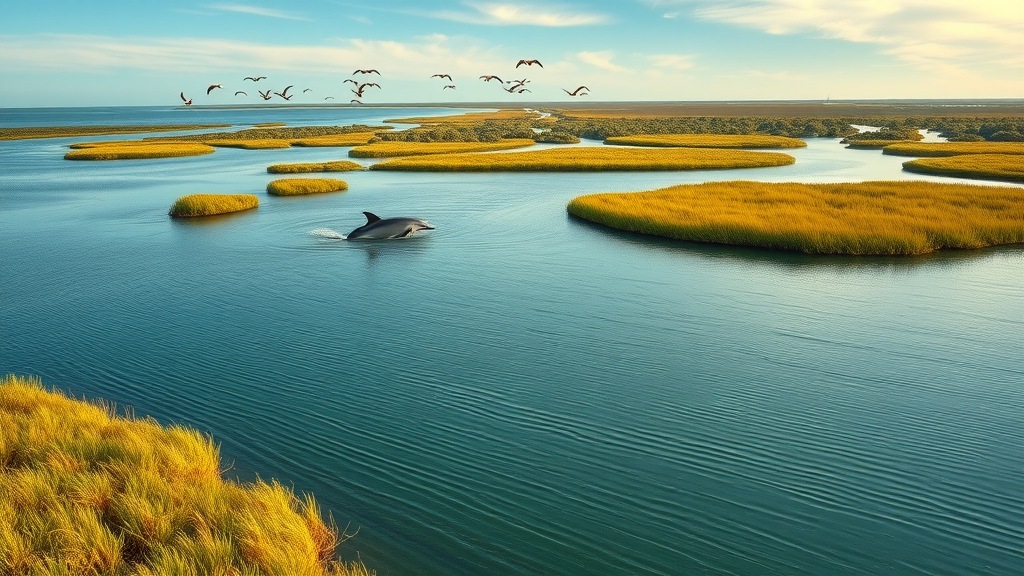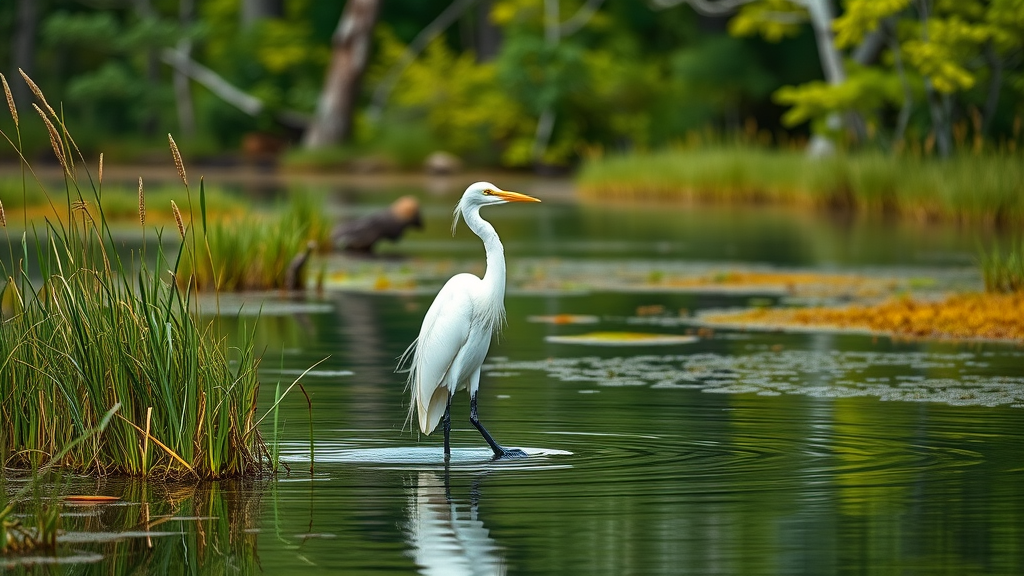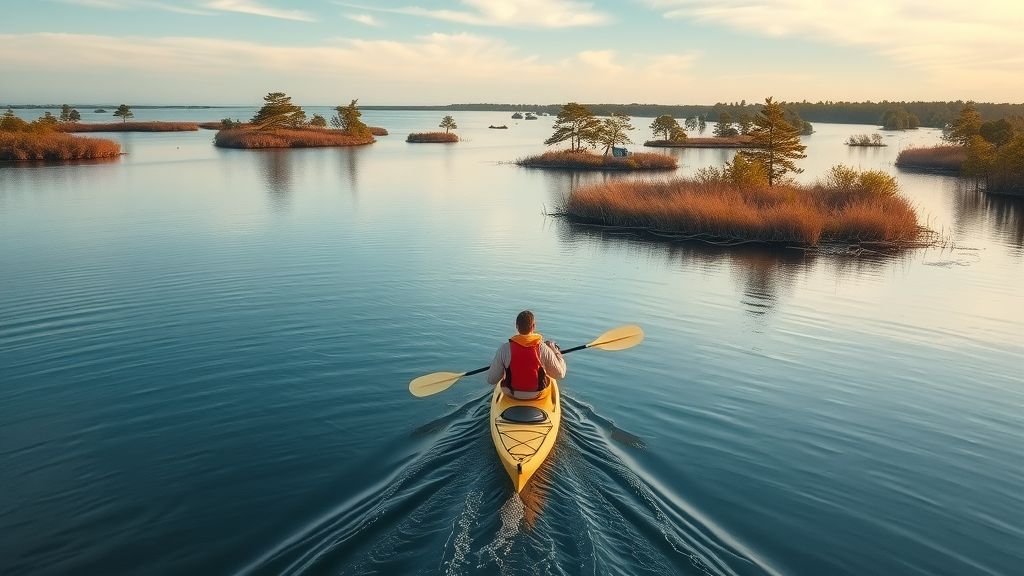Dive Into Untouched Florida: Why Cedar Keys National Wildlife Refuge Deserves a Closer Look
In a world where most destinations are shaped by human hands and crowded by eager visitors, truly wild, untouched places have become rare gems. Imagine an archipelago shielded from bustling city life, where vibrant coastal habitats remain protected, and local wildlife thrives much as it did a century ago. The Cedar Keys National Wildlife Refuge stands as one of these exceptional havens, quietly resting along Florida’s Gulf Coast. What makes this place so intriguing is not only its isolation, but the sense of wonder it inspires in those who take the time to explore its protected islands, winding tidal creeks, and dense maritime forests.
Many people overlook destinations like the Cedar Keys National Wildlife Refuge, assuming popular beaches and boardwalks offer the richest Florida experiences. But there’s a growing awareness—among both naturalists and everyday outdoor lovers—that ecological sanctuaries hold deeper stories and, often, the most awe-inspiring sights. Readers drawn to Cedar Keys aren’t just looking for another sunny spot—they’re searching for immersion in genuine wilderness, the possibility to witness rare birdlife or glimpse a passing dolphin, and an education in local ecosystems that can’t be gained elsewhere. If the promise of discovering the unexpected pulls you forward, uncovering the value of Cedar Keys National Wildlife Refuge is not just recommended—it’s essential.

What Makes Cedar Keys National Wildlife Refuge So Essential to Florida’s Landscape?
Cedar Keys National Wildlife Refuge, nestled off Florida’s central Gulf Coast, represents a living mosaic of salt marsh, mangroves, tidal creeks, and offshore islands. Unlike many state or local parks, national wildlife refuges like Cedar Keys are set aside specifically to preserve natural communities and protect migratory birds and threatened species. Here, every island and waterway serves a greater ecological purpose: maintaining vital habitats for nesting, roosting, and feeding across all seasons. From thick pine forests to remote beach strandlines, the diversity within the refuge offers extraordinary opportunities for scientists—and curious visitors alike—to study fragile coastal systems working in harmony.
Failing to appreciate these environments can have far-reaching consequences. Without understanding the profound role of wildlife refuges, one risks missing critical lessons about climate resilience, habitat loss, and the delicate balance between human activities and nature. At Cedar Keys, every tide, every songbird’s call, and every subtle shift in the marsh serves as a reminder of Florida’s ever-evolving coastline. Those who dismiss the value of this refuge risk overlooking not just a unique travel experience, but the intricate mechanics that keep Florida’s wild heart beating strong through storms, migrations, and the slow turning of seasons.

Why Exploring Cedar Keys National Wildlife Refuge Brings Benefits Beyond the Beach
Cedar Keys National Wildlife Refuge Outstanding Florida Water has become a beacon for those searching for deeper meaning in their outdoor adventures. Protected as Outstanding Florida Water, this stretch of the Gulf coastline is recognized for exceptional water quality and ecological value—ensuring that visitors see Florida as it once was, unspoiled and rich with biodiversity. The true benefit of exploring the refuge goes well beyond recreational enjoyment; spending time among the islands and waters encourages a greater understanding of environmental stewardship and the interconnectedness of land and sea.
Wildlife enthusiasts can observe rare shorebirds nesting uninterrupted, while kayakers glide through serene estuaries untouched by motorboats. Students and families find hands-on education in tidepooling and coastal hiking, gaining firsthand understanding of subjects like erosion, species adaptations, or conservation science. The refuge offers more than beauty: it demonstrates, in living color, why protected lands matter for everyone—from the seasoned ecologist to the curious traveler. By choosing to engage respectfully with places like Cedar Keys, visitors help support ongoing preservation so these natural wonders can thrive for generations to come.
The Living History of Cedar Keys: Nature’s Ongoing Restoration Story
Part of the enduring appeal of Cedar Keys National Wildlife Refuge rests in its rich historical context. Designated in 1929, the refuge’s origins are grounded in the effort to protect vital nesting grounds for colonial wading birds, many of which were hunted nearly to extinction for their plumes. Over the decades, the area has expanded and evolved, adapting to new conservation challenges and environmental pressures. Today, the islands and waterways serve as both living laboratory and historical reminder of what committed stewardship can accomplish.

Within the refuge, visitors walk trails and paddle routes that echo with the history of old Florida—where commercial fishermen, native peoples, and wildlife coexisted along twisting mangrove shorelines. For those interested in Florida’s layered past, each visit becomes an exploration through time, helping travelers and residents alike understand how human actions have shaped, and continue to influence, the landscape. Observing flourishing bird colonies now offers hope: landscapes can recover if given the right protections and ongoing care.
From Day Trips to Deep Connections: Practical Tips for Experiencing the Refuge
For first-time visitors, Cedar Keys National Wildlife Refuge offers accessible entry points but rewards those willing to slow down and observe carefully. Practical tips include bringing binoculars for wildlife spotting, sturdy shoes for sandy or muddy trails, and patience—many of the most remarkable sightings require attentive listening and quiet perseverance. Canoeing or kayaking enables access to smaller, more secluded islands where rare shorebirds and aquatic mammals feed in peace.
Photography enthusiasts will find shifting light, dramatic skies, and abundant birdlife at dawn or dusk. Educational signage at key locations helps illuminate the refuge’s natural systems and ongoing restoration projects. To fully appreciate the refuge, plan visits around lower tides for better wading bird activity or spring and fall migrations for peak birdwatching. A spirit of curiosity and respect transforms every outing into a memorable lesson in Florida’s wild resilience.

Conservation with a Coastline Perspective: A Deep Dive into Cedar Keys’ Unique Mission
Cedar Keys National Wildlife Refuge Outstanding Florida Water operates with a guiding philosophy centered on protecting coastal habitats and fostering public appreciation of Florida’s natural resources. The unique blend of freshwater and saltwater landscapes represents more than scenic beauty; it is a biological stronghold supporting threatened and endangered species and sustaining commercial fisheries vital to local communities. The refuge’s ongoing efforts underscore a commitment to preserving water quality, managing invasive species, and restoring habitats that are increasingly rare along developed coastlines.
A focus on long-term sustainability runs through every project and educational outreach effort at the refuge. Managers strive to balance accessibility with protection, promoting low-impact recreation and science education while guarding sensitive nesting areas and critical fish nurseries. This mission-driven approach positions the refuge not just as a haven for wildlife, but as a model for how Florida can safeguard its natural legacy despite the pressures of modern development and tourism. The result is a place where stewardship and wonder coexist, enlightening visitors and inspiring new generations to cherish wild places.
Visitors Speak: The Lasting Impact of Cedar Keys National Wildlife Refuge
Few testimonials carry more weight than the authentic voices of those who’ve walked among windswept trees and listened to the call of ospreys overhead. Visitors to Cedar Keys National Wildlife Refuge often express a sense of discovery that stays with them long after their boat leaves the dock or their shoes shake off the last grains of sand. These reflections validate the true value of protected spaces and connect newcomers to a tradition of exploration and respect for Florida’s natural wonders.
[[review_one_text]]
Personal stories like this reinforce the knowledge that Cedar Keys National Wildlife Refuge leaves a lasting impression—a spark of curiosity, gratitude, or even transformation. Each voice offers encouragement to those considering a visit: the hidden wonders of Cedar Keys await all who seek to experience wild Florida at its most unspoiled and inspiring.
How Cedar Keys National Wildlife Refuge Shapes the Future of Florida Conservation
Every journey into Cedar Keys National Wildlife Refuge is a step into a living conservation story—one where the past and present work together for a sustainable, vibrant future. By anchoring the value of healthy coastlines and dynamic habitats, the refuge has become an essential part of Florida’s environmental toolkit, demonstrating the impact of thoughtful preservation on both nature and local communities. Cedar Keys’ commitment to balancing access, education, and protection ensures that visitors continue to learn from and be inspired by Florida’s wild coast for generations.
As an authority in habitat restoration and environmental education, Cedar Keys National Wildlife Refuge Outstanding Florida Water sets the standard for what coastal stewardship can achieve. The refuge’s unique blend of ecological integrity, historical relevance, and public outreach ensures that its story remains central in discussions about how to protect and celebrate the state’s invaluable coastal resources. For those ready to move beyond the ordinary and explore the heart of wild Florida, Cedar Keys National Wildlife Refuge remains a vital guidepost on the map.
Contact the Experts at Cedar Keys National Wildlife Refuge Outstanding Florida Water
If you’d like to learn more about how Cedar Keys National Wildlife Refuge could benefit your wildlife education, family recreation, or environmental understanding, contact the team at Cedar Keys National Wildlife Refuge Outstanding Florida Water.
📍 Address: Cedar Key, FL 32625, USA
🌐 Website: [No website provided]
Cedar Keys National Wildlife Refuge Outstanding Florida Water Location and Hours
Please note: No specific hours of operation are currently listed. For the most accurate and up-to-date information, visitors are encouraged to inquire directly prior to planning their visit.

 Add Row
Add Row  Add
Add 





Write A Comment